Only a decade ago, the e-bike was considered something for the old or disabled. Improving technology and more attractive designs slowly changed perception. This blog explores how the e-bike matures in terms of market shares and establishes itself as a new type of product in a family of variants.
Slow start
E-bikes go back a long time. As described in my previous blog ‘on the origin of the e-bike’ first experiments with e-bikes date back to the end of the 19th century. Only a decade after the invention of the Rover Safety Bicycle, which is regarded the ‘mother-of-all-bicycles’, patents for e-bikes were filed. The development of the e-bike started slowly. An example of an early type of e-bike is this model developed in the 1930s by Philips and Simplex. It was not a succes and this early e-bike was not present at the annual show of RAI Vereniging (the Dutch association for bicycle and automotive industry).
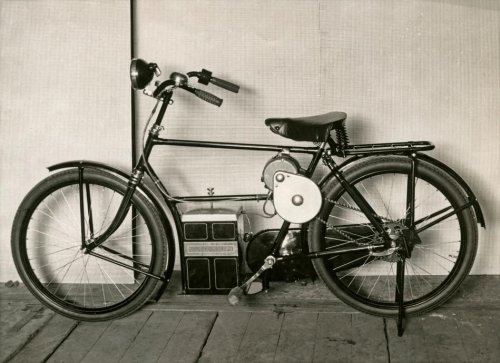
Momentum changed
How different prospects look today! Annual sales figures published by RAI Vereniging show how the electric bicycle sales increased in the Netherlands last years towards 40% of all new bicycles sold in 2018.
This market share figure is a combination of all electric bicycles combined versus four other categories; the normal tour- or city bike, the hybrid, child or youth bicycles, and other (amongst others race bicycles, mountain bikes, folding bikes). The development of sales value however shows an even more spectacular development. Total bicycle sales revenue in the Netherlands in 2018 was 1.22 billon Euros of which 823 million Euros or 67% was attributed by electric bicycles. Thus conventional bicycles are still dominant in absolute figures, but electric bicycles dominate in terms of revenue.
Electric cars receive more attention in the press but still struggle to gain significance, whereas the major shift in cycling is already taking place (at least in the Netherlands).
Many manufacturers
In 2018 at least 23 different brands of electric bicycles were manufactured in the Netherlands. Some of these brands belong to a single holding (Sparta, Koga, Batavus are some of the brands produced by the Accell Group N.V.). Giant, the worlds largest bicycle manufacturer, has manufacturing facilities in the Netherlands next to China and Taiwan. Once the market matures, it is expected competition on price will lead to a shake out and so reduce the amount of different manufacturers active.
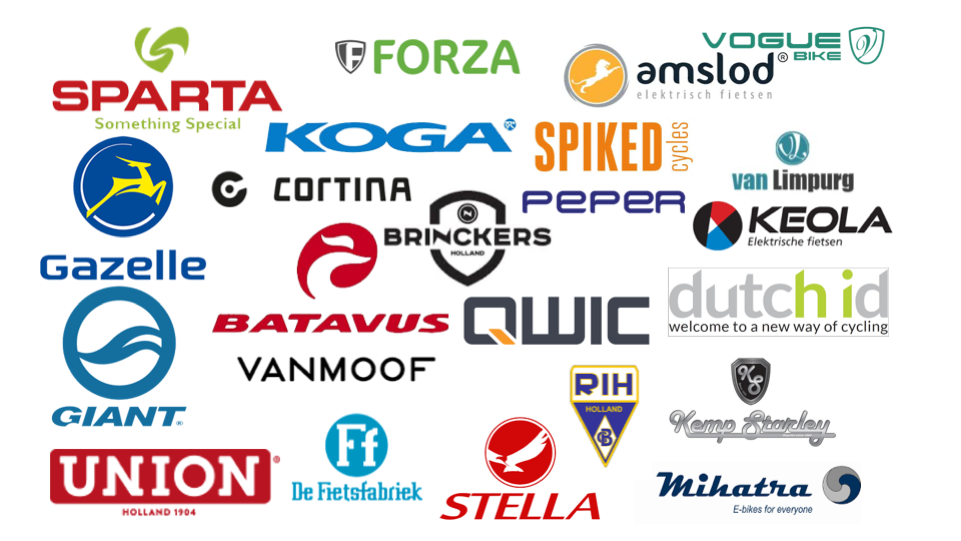
e-Bikes branching off
A product family tree of bicycles drawn by Robbert Bakker (see also On the Origin of Products, Figure 6.25) recognised eight bicycle segments including the e-bike. RAI Vereniging reported five bicycle segments in the sales statistics (but, with a segment ‘other’ that consists of three variants).
Bicycle segments by Bakker; city-, tour-, hybrid-, foldable-, racing-bicycles, BMX, Mountainbike, and e-bike.
Bicycle segments by RAI; city- or tour-, hybrid-, child- or youth-, electric-bicycle, other (a.o. race-, MBT/ATB- and folding-bicycles).
It can be argued these classifications are not complete and there are more segments for example the cargo bike. Without getting bogged down, it is clear that there are different segments in the bicycle market. And each of these segments is determined by a clearly distinctive design, as well as form of use. The same holds for the electric versions of the bicycle. Besides child- or youth bicycles most of these segments appear to have their electric version.
Below diagram proposes a Product Family Tree of pedelec type electric bicycles. Pedelecs are controlled by pedal movement and differ from ‘throttle type’ electric bicycles. A next blog will further discuss why the speed pedelec is considered to be a different type of product.
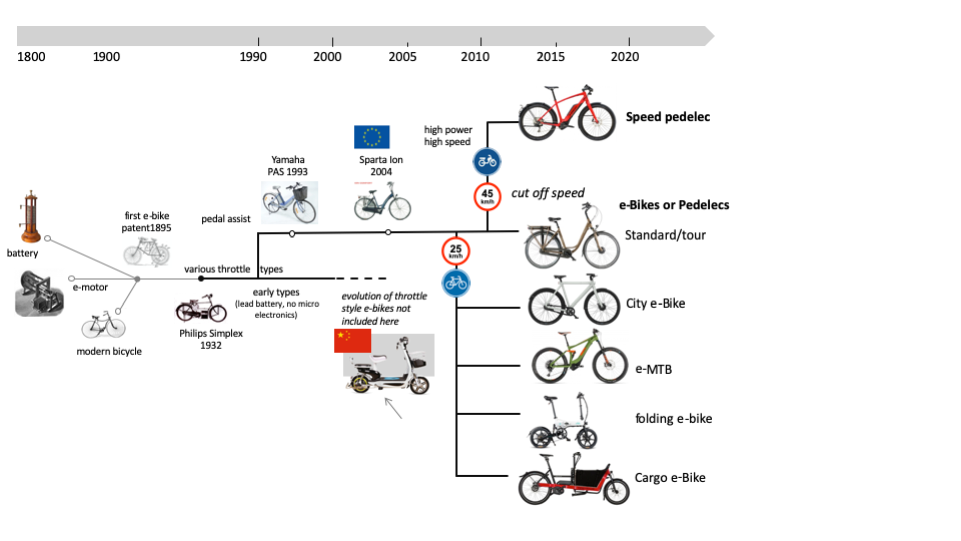
Future looks bright, more to come
With all attention for reducing carbon emissions electric mobility is set to play a major role in the future of transportation. Battery capacity improves, and prices are expected to go down. The e-bike in all its incarnations will compete with many different types of electric mobility. The normal (pedelec style) e-bike, is quite similar to their regular non-electric variants in terms of use. The speed pedelec however enables use types that compete with mopeds, motor bikes and cars. Its higher speed and different type of use imply more differences will evolve in the design which makes the speed pedelec an interesting subject for analysis. Therefore I will dedicate a number of following blogs exploring the evolution of the speed pedelec.
Copyright © 2019 Huub Ehlhardt.
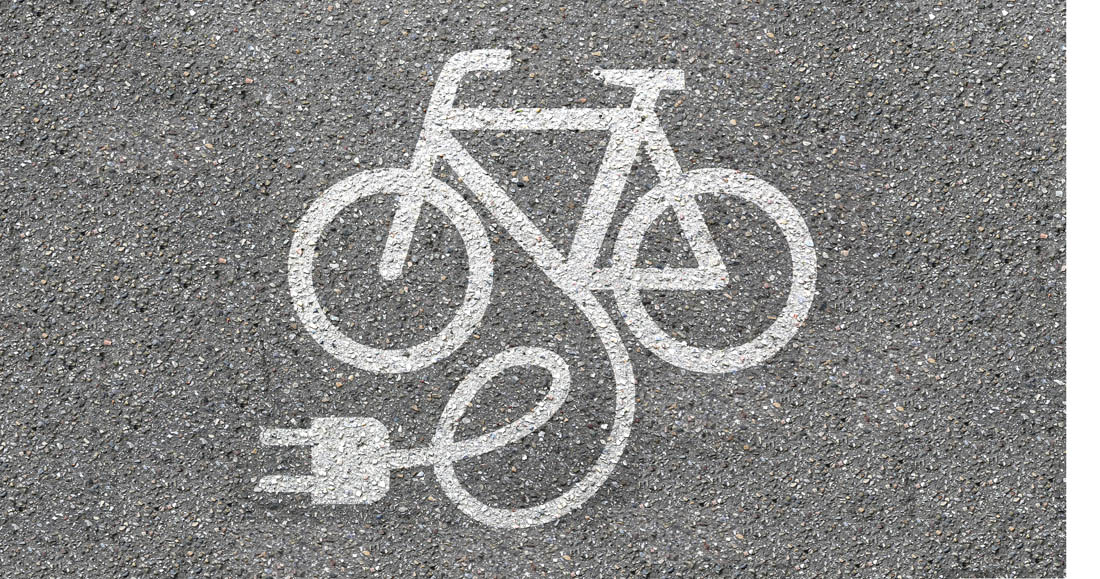
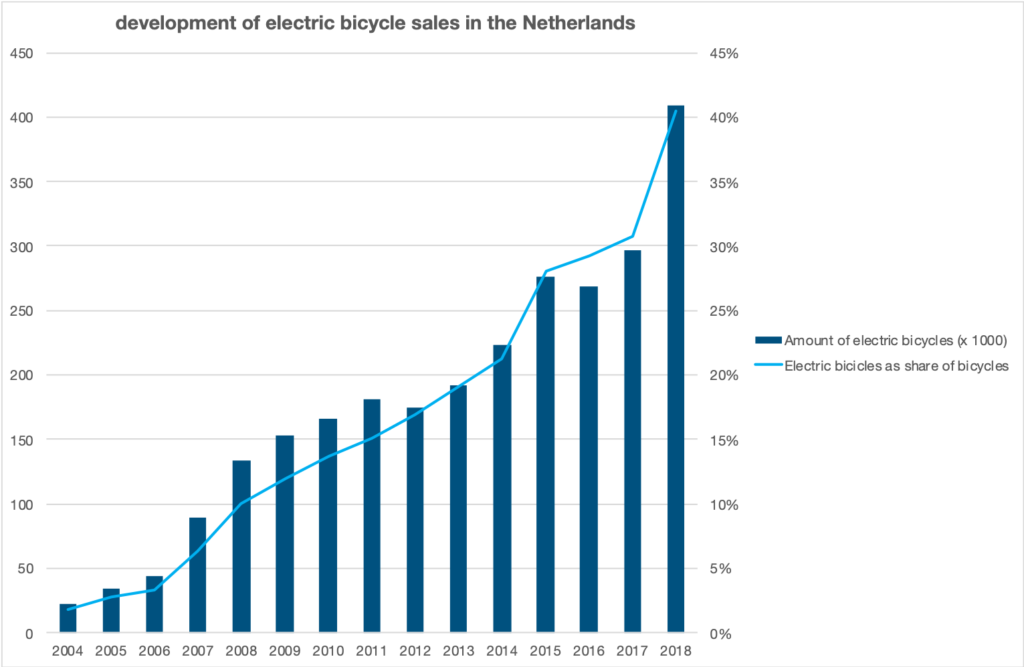

I really have never understood why the throttle has been banned in most of the western countries (and Japan) . If the speed is regulated , what is the problem if people just want to accelerate (now and then)? People just love it ! I’m sure that in many places having that dual function , would and will help ebike sales and usage pick up faster and stronger. Was this a result of a European centric bicycle purist policy and then the rest of the countries blindly followed ? I think it’s time to revisit the norm and let the market decide if PAS +throttle has a space in the market.
At Buzzy Bee Bike in Thailand we have the trottle. Indeed easy to accelerate and go with the flow if necessary. If you want to try it, come and join a tour.